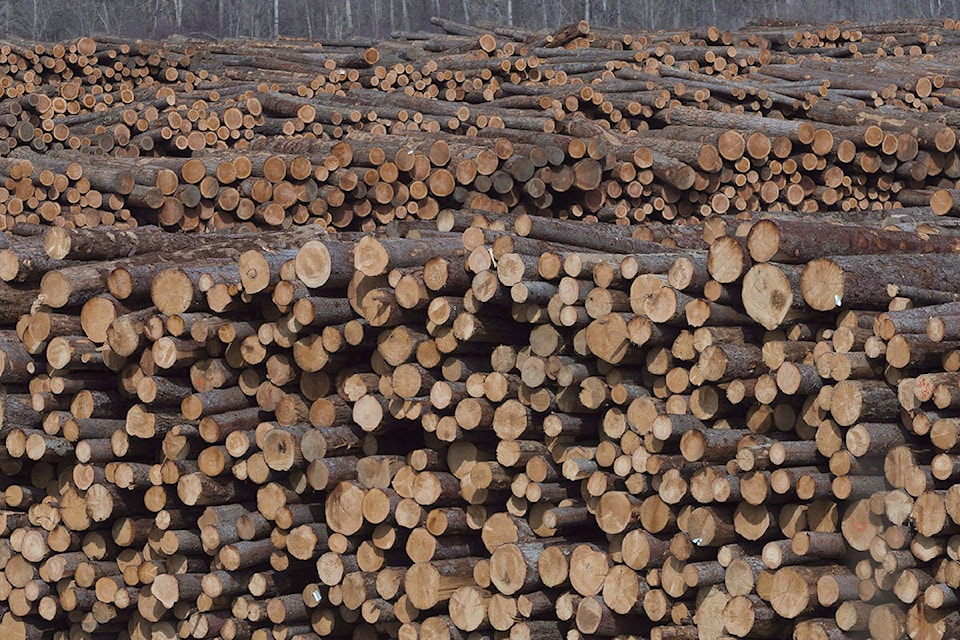It seems barely a day goes by without an announcement about layoffs, temporary closures or permanent mill shut downs in British Columbia’s struggling forest industry.
As a result, thousands of workers, their families and many communities have been left facing uncertain futures.
The layoffs and shutdowns are causing widespread economic and social pain, says B.C. Liberal forestry critic John Rustad.
“It’s unfathomable to think of the carnage that’s already happened, let alone what will happen this winter,” he said in a recent interview. “It’s going to be a very bleak winter.”
Rustad said on a visit to Campbell River a car dealer told him he repossessed 10 vehicles from forestry workers who were out of work. One laid-off worker asked him if he could keep his vehicle until Christmas and sold the dealer a load of firewood to make a payment, Rustad said.
On Vancouver Island, where Mosaic Forest Management announced an early winter shutdown of timber harvesting operations, 2,000 people are out of work indefinitely.
Among those affected are also about 175 workers at a mill owned by Tolko Industries in Kelowna where the plant will close permanently on Jan. 8, while Canfor’s decision to permanently close its mill in Vavenby, north of Kamloops, resulted in the loss of 172 jobs in the community of about 700 people.
“Basically, I would say 80 per cent or more of the coastal forest sector is down,” Rustad said. ”It’s not good. It’s really, really tough.”
Finance Ministry budget numbers show forest revenues are down 11 per cent so far this year and projected harvest volumes of 46 million cubic metres are the lowest in years.
The NDP government faced daily calls for action from the Liberals during the fall session of the legislature, which concluded Thursday.
“When will the premier and his government start paying attention and do something?” asked Liberal co-finance critic Shirley Bond, whose Prince George riding is facing about 50 impending layoffs at a mill.
READ MORE: B.C. forest industry aid on the way, Doug Donaldson says
Liberal rural development critic Donna Barnett wants the government to grant payment relief to Sigurdson Forest Products, which owes the province $4.6 million in stumpage fees. She said the company in Williams Lake is committed to paying the fees but needs a temporary stay on the payments to save up to 200 jobs.
“SFP is a viable company and wants to continue operations,” said president Brian Sigurdson in a letter to Finance Minister Carole James, Premier John Horgan and Forests Minister Doug Donaldson.
“We want to continue to support all of our employees and our local businesses and community.”
Donaldson said the request for relief is before the Ministry of Finance, but he added stumpage rates in the B.C. Interior dropped by 12 per cent in October and 24 per cent on the coast.
He also said political intervention into the stumpage system could make matters worse for B.C. companies because it could result in a trade challenge from forest producers in the United States. B.C. lumber exports to the U.S. already face tariffs of about 20 per cent.
Low timber prices and the large-scale destruction of Crown harvest zones during the pine beetle epidemic and two successive record wildfire seasons have hurt the industry, Donaldson said.
“We understand the impact the global downturn is having on the economies of the Interior and we’re determined to address it,” he said in the legislature.
He said the province has taken steps to drive more logs to domestic production and for use in value-added products.
Industry spokeswoman Susan Yurkovich said it can rebound but companies need assurances from the government about long-term availability of a timber supply at a reasonable cost. The industry itself must move to greener products and become more competitive on the global market, she added.
READ MORE: Fewer trees, higher costs blamed for devastating downturn in B.C. forestry
“I’ve spent 25 years in the resource sector and I’ve spent a lot of time in many of the communities that are hurting,” said Yurkovich, president of the Council of Forest Industries.
“The most important thing we can do for those communities in transition is to look at where are the future opportunities for the sector.”
A report by the council in September said the industry has been a cornerstone of the B.C. economy for more than 100 years and the well-being of 140 communities is closely linked to the health of the sector.
It said forestry supports about 140,000 jobs and generates about $4 billion in revenues annually for the province.
Dirk Meissner, The Canadian Press
Like us on Facebook and follow us on Twitter.
